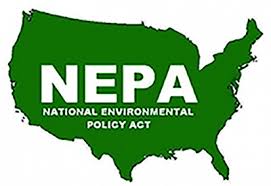Ninth Circuit allows landowner to challenge impaired water listing

UPDATED. See below.
An odd judicial couple, conservative Jay Bybee (of torture memo fame) and liberal Stephen Reinhardt, have combined to issue an even odder Clean Water Act standing decision. In Barnum Timber v. EPA they ruled, over the dissent of District Judge James Gwin, sitting by designation, that a landowner had standing to challenge EPA’s approval of California’s impaired waters list.
In general, I’m a fan of broad readings of standing to challenge agency action, because I think judicial review is essential to holding agencies accountable for carrying out their statutory obligations. But EPA shouldn’t have to be accountable for injury that, even assuming it’s real, is entirely caused by California.
The Clean Water Act requires that states periodically submit to EPA lists of waters that are “impaired” by pollution, meaning that they are not meeting the state’s water quality standards. EPA reviews the lists and approves or disapproves them. The Clean Water Act also requires that states produce Total Maximum Daily Loads (TMDLs, essentially pollution budgets) for listed waters. But it does not require that states take any action to reduce non-point-source pollution to impaired waters. Those choices are left entirely to the states.
Here’s what we know about Barnum Timber’s injury from the opinion: The company owns land “in the Redwood Creek watershed.” In 2006, California submitted a list of impaired waters to EPA, including Redwood Creek, which is impaired by sediment and temperature. EPA approved the list. The listing was not new; Redwood Creek has been on the impaired list since 1992. At this late date, Barnum Timber decided to sue EPA, rather than California. It alleged that it had been injured by land use restrictions due to the listing and that its property values had decreased. It submitted affidavits from two professional foresters in support of the reduced value claim. The foresters asserted that the market value had fallen because of a public perception, correct or not, that onerous regulation would follow from the listing.
The trial judge dismissed the complaint for lack of standing, finding the claims of injury conclusory and not connected to the challenged action. The majority of the Ninth Circuit panel disagreed. Writing for himself and Judge Reinhardt, Judge Bybee concluded that Barnum Timber had met the Article III standards, showing injury in fact, causation, and redressability.
Injury in fact, according to Judge Bybee, was sufficiently established at this pleading stage by the foresters’ declarations. Never mind that they had no property valuation expertise and cited no basis for their claims about public perception. Judge Gwin, dissenting, described this claimed injury as too “speculative and uncertain” to support standing, pointing out that Barnum had not identified any action that could plausibly be tied to property value reductions. This aspect of the majority decision may be wrong, but it’s not particularly problematic. At the pleading stage, it’s appropriate to accept plausible assertions. This one is at the outer boundaries of plausibility, but Barnum will be required to back its claims up in order to proceed.
More problematic are the majority’s conclusions on causation and redressability, and the misunderstanding of the Clean Water Act they reveal (in almost his only reference to the actual terms of the Clean Water Act, Judge Bybee flubs it badly, confusing water quality standards with restrictions on discharges that violate those standards). With very little analysis, Judge Bybee endorses Barnum’s claim that EPA is responsible for the alleged reduction in market value due to public perception that listing has regulatory consequences. Judge Bybee does not even ask whether the alleged public perception has any basis in reality. But surely that is relevant. EPA is not the legal cause of irrational drops in market value; public irrationality or misunderstanding is. In fact, as the dissent explains in some detail, listing as an impaired water does not, by itself, carry any regulatory consequence relevant to this land or Barnum’s activities. California alone decides what timber harvest regulations to apply. The Clean Water Act imposes no limitations on timber harvest, whether or not the water is impaired. There is no conceivable scenario in which EPA will (or even could) send enforcement agents out or file suit to restrict Barnum’s logging.
Beyond that, EPA didn’t even decide that Redwood Creek was impaired; California did when it submitted its 1992 list. And EPA didn’t decide what it would mean for Redwood Creek to be impaired; California did when it set water quality standards. Although EPA does review both state impaired water lists and state water quality standards, it does so from a floor rather than a ceiling perspective. As far as the Clean Water Act is concerned, states are free to over-regulate, but not to under-regulate. So EPA occasionally disapproves lists because they leave polluted waters out, but it would be quite odd for EPA to aggressively police whether states have included too many waters.
The redressability analysis is much the same. It’s a slam dunk for the majority once it has incorrectly concluded that the impaired listing causes injury to go on to say that a court order invalidating the listing will fix the problem. Again Judge Bybee wastes no time looking at the Clean Water Act. But because the Act is a floor rather than a ceiling, whether or not Redwood Creek is impaired for Clean Water Act purposes is irrelevant for whether or not California chooses to protect it from careless logging practices. Judge Bybee says, correctly, that Barnum does not have to show that EPA is the only cause of its problem, or that the judgment it seeks will completely fix the problem. But here EPA is not even a contributing cause to the alleged harm.
It would be fair to ask, so what? This lawsuit won’t succeed on the merits. What’s the big deal of letting it get past a motion to dismiss? In these days of strained budgets, maybe the problem is that the US shouldn’t have to bear the costs of defending this sort of meritless suit. But it’s not just the money and time. I think the real problem with this particular suit is that it so unfairly paints EPA as the villain, playing in to the Republican theater of the federal government as evil actor. I’ve got no problem with Barnum suing California based on the state’s water quality standards, the state’s designation of this creek as impaired, or any regulations the state imposes on that basis. The state should be prepared to defend those decisions. But EPA shouldn’t be hauled into federal court because it’s not reining in California. That is not, and should not be, it’s job.
UPDATE, 2/10, 4 p.m. PST: Pacific Legal Foundation’s Damien Schiff, who represents Barnum Timber e-mailed me a clarification. He says:
Barnum did sue the State Water Resources Control Board first. But, the Board moved to dismiss on the grounds that EPA was an indispensable but unjoinable party (because one can’t sue EPA in state court). So, Barnum then went to federal court, only to be told by the district court that the courthouse doors were closed there too. Although it may seem a little indirect on its face to sue EPA directly, Barnum really had no other choice if it ever wanted to get its claims heard in court.
In some ways, this is a bit of an awkward situation for both the Water Board and Barnum, because EPA owns the truck the state is driving. It seems likely that if the Water Board were to remove Redwood Creek from the impaired list, EPA would look askance. It might even disapprove the submission, in which case any argument Barnum had would be with EPA.
But I’m not ready to agree that it is the Water Board rather than Barnum Timber that is responsible for EPA being hailed into court. Reading the ruling dismissing the state court action, which Mr. Schiff was good enough to send me, it looks like Barnum directed its argument in the state court to EPA’s, rather than the state’s, action. At least that’s the way the judge read it. She says “The pleading as currently framed challenges the adoption of the 303(d) list and the United States Environmental Protection Agency’s establishment of Total Maximum Daily Loads (TMDLs) for sediment in Redwood Creek. . .” Of course Barnum couldn’t expect to use a state court action against the SWRCB to pursue its grudges against EPA. But it doesn’t follow that Barnum should necessarily be able to pursue those grudges in federal court. The real problem may be that Barnum went to court too soon. Notwithstanding Judge Bybee’s opinion, Barnum has not been harmed by any government agency by reason of the mere adoption or approval of an impaired waters list. If it is harmed in the future by a state-imposed regulatory restriction, it can challenge that restriction in state court without involving EPA.








Reader Comments